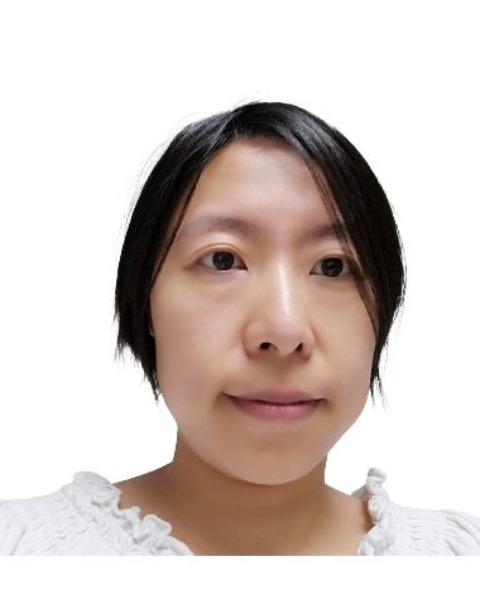Manufacturing & Analytical Characterization
Symposium: Navigating the Complexities of Novel Modalities and Delivery Systems 1
Navigating Challenges of High Concentration Protein Therapeutics: Advanced Analytical Approaches
Tuesday, November 11, 2025
9:30 AM - 10:00 AM CT
Location: 301 ABC

Hanmi Xi, PhD (she/her/hers)
Director
Merck and Co Inc
Rahway, New Jersey
Speaker(s)
As the biopharmaceutical field advances, there is a growing demand for high-concentration protein therapeutics that enable lower dosing volumes, facilitating administration via subcutaneous (SC) or intravitreal injection. However, developing such formulations poses unique challenges. At high protein concentrations, molecular crowding intensifies protein-protein and protein-excipient interactions, leading to increased viscosity and a higher propensity for aggregation. This aggregation can compromise formulation stability, ultimately affecting the safety and efficacy of therapeutic products.
Traditional analytical techniques often struggle to address the complexities of high-concentration protein samples. Many methods operate within dynamic ranges that require dilution of samples for accurate measurement. However, dilution can disrupt reversible aggregates, complicating data interpretation and hindering formulation development.
In this presentation, we will explore innovative analytical tools designed to overcome these challenges. We will focus on advanced techniques that offer enhanced sensitivity and resolution for characterizing protein-protein and protein-excipient interactions in high-concentration formulations.
Key analytical methods to be discussed include:
Small Angle X-ray Scattering (SAXS): Provides structural insights into protein size and shape in solution at high concentrations without dilution.
Fluorescence Spectroscopy: Enables real-time monitoring of molecular interactions and conformational changes, facilitating analysis of aggregation under various conditions.
Hydrogen/Deuterium Exchange (HDX) Mass Spectrometry (MS): Probes protein dynamics and conformational changes in detail, even in crowded environments.
Nuclear Magnetic Resonance (NMR) Techniques: Offers structural and dynamic information on proteins, allowing assessment of intermolecular interactions at high concentrations.
Additionally, high-concentration protein formulations are often delivered as combination drug products via medical devices, which introduce further risks to stability, quality, and functionality. We will introduce the reciprocal injection device (RID) as an effective tool to enhance interactions within primary containers, enabling robust compatibility evaluation with prefilled syringes. Furthermore, we will discuss water NMR as a powerful, non-invasive, in situ method for analyzing protein aggregation in high-concentration combination drug products.
Traditional analytical techniques often struggle to address the complexities of high-concentration protein samples. Many methods operate within dynamic ranges that require dilution of samples for accurate measurement. However, dilution can disrupt reversible aggregates, complicating data interpretation and hindering formulation development.
In this presentation, we will explore innovative analytical tools designed to overcome these challenges. We will focus on advanced techniques that offer enhanced sensitivity and resolution for characterizing protein-protein and protein-excipient interactions in high-concentration formulations.
Key analytical methods to be discussed include:
Small Angle X-ray Scattering (SAXS): Provides structural insights into protein size and shape in solution at high concentrations without dilution.
Fluorescence Spectroscopy: Enables real-time monitoring of molecular interactions and conformational changes, facilitating analysis of aggregation under various conditions.
Hydrogen/Deuterium Exchange (HDX) Mass Spectrometry (MS): Probes protein dynamics and conformational changes in detail, even in crowded environments.
Nuclear Magnetic Resonance (NMR) Techniques: Offers structural and dynamic information on proteins, allowing assessment of intermolecular interactions at high concentrations.
Additionally, high-concentration protein formulations are often delivered as combination drug products via medical devices, which introduce further risks to stability, quality, and functionality. We will introduce the reciprocal injection device (RID) as an effective tool to enhance interactions within primary containers, enabling robust compatibility evaluation with prefilled syringes. Furthermore, we will discuss water NMR as a powerful, non-invasive, in situ method for analyzing protein aggregation in high-concentration combination drug products.
Learning Objectives:
- Upon completion, participants will be able to describe the challenges associated with high concentration protein formulations development, especially on the analytical front.
- Upon completion, participants will be able to understand key advancement in analytical toolbox development for probing protein interactions in high concentration environments.
- Upon completion, participants will be able to gain insight on how innovative tools like the reciprocal injection device (RID) and water NMR enhance compatibility evaluation and stability assessment of combination drug products in medical devices.

